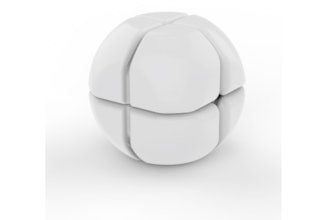
In the simplest terms, thermocouples are essentially a type of thermometer; more specifically, they act as temperature sensors, using electromagnetics, as opposed to physical changes, to determine temperature. Thermocouples are used in a wide range of applications, from cement and oil and gas to power generation and pulp and paper.
These versatile measuring devices are comprised of two wire legs, made of different materials, welded together at the temperature-sensing end, or temperature measurement junction — where temperature is measured. When this junction — the hot junction — registers a different temperature than the reference or “cold” junction, located at the other end of the thermocouple, voltage is created; this reaction is known as the thermoelectric effect. An electron flowmeter at the cold junction detects the voltage and converts it into a temperature reading.
Resistance temperature detectors (RTDs) are similar to thermocouples in that they use electric properties to detect temperature, but they operate in a fundamentally different manner. While thermocouples rely on the thermoelectric effect of voltage creation, RTDs measure temperature by resistance and do not require specialized wire. Though similar, thermocouples and RTDs are not interchangeable.
Thermocouple Wire Types
Depending on the specific application, a wide range of wire materials can be used in thermocouples. Determining a thermocouple’s chemical resistance, vibration resistance, general durability, temperature range, and so on, different materials allow thermocouples to withstand different environmental conditions — thereby dictating the applications that a given thermocouple can be used in.
According to ANSI/ASTM standards, thermocouples are designated type ratings based on the materials of the wire, such as chromel, alumel, or constantan. The most popular thermocouple wire types are as follows:
Nickel Alloy Thermocouple Types
- Type K — Comprised of a chromel (an alloy of roughly 90% nickel and 10% chromium, available in several different grades) positive conductor and an alumel (a 95% nickel, 2% aluminum, 2% manganese, 1% silicon alloy) negative conductor, type K thermocouples are among the most affordable and can be found in a wide variety of applications, with operating temperatures ranging from -454 °F to 2300 °F.
- Type J — Type J thermocouples feature an iron positive conductor and a negative conductor made of constantan (a copper alloy of 55% copper and 45% nickel). These thermocouples have a slightly smaller temperature range as well as a shorter lifespan, and are not ideal for high-temperature oxidizing environments. Type J is usually found in older equipment that is incompatible with other thermocouple wire types.
- Type T — Constructed of a copper positive conductor and constantan negative conductor, type T thermocouples also have a smaller temperature range. Commonly employed in electrical generators, these thermocouples provide superior stability.
- Type E — Featuring a chromel positive conductor and constantan negative conductor, type E thermocouples are ideal for extremely low-temperature applications, such as cryogenics and freezers.
Noble Metal Thermocouple Types
Platinum/rhodium alloy types R, S, and B, sometimes referred to as noble metal thermocouples, are ideal for high-temperature applications.
- Type R — These thermocouples have a pure platinum wire and a 13% rhodium-platinum alloy wire, and are ideal for extremely high-temperature uses. They are sometimes used in low-temperature applications as they have high stability and accuracy. Type R thermocouples are more expensive than type S as they contain a higher percentage of rhodium.
- Type S — With a pure platinum wire and a 10% rhodium platinum alloy wire, high-stability and high-accuracy type S thermocouples are also used in very high-temperature applications. Ideal for pharmaceutical and biotech uses, type S is often used with a protective ceramic tube.
- Type B — Type B is comprised of two tungsten alloy wires, one with 6% rhodium and another with 30% rhodium. Of all the noble metal thermocouples, type B can withstand the highest temperatures while maintaining optimal accuracy and stability. Type B has a lower output at temperatures below 1112 °F (600 °C).
These thermocouples are also ideal in both oxidizing and inert atmospheres but are not compatible for use in applications that require placement in metal tubes. They can be prone to contamination if mishandled.
Other wire types include tungsten-rhenium alloy thermocouples C, D, and G, as well as nickel-alloy types M and N.
Learn More
The specific type of metal blend in each wire type directly affects thermocouple properties, including temperature range, vibration resistance, durability, lifespan, chemical resistance, and application compatibility. To ensure longevity and reliability in your thermocouples, it’s critical to partner with a manufacturer who can offer experience and expertise working with exotic metals.
Keats Manufacturing has been designing and fabricating thermocouples for over 50 years, with deep expertise working with alumel, constantan, and chromel. Find out how to stretch your metal stamping project’s budget by downloading Keats’ free eBook: 10 Ways to Reduce Cost & Turnaround Time.























